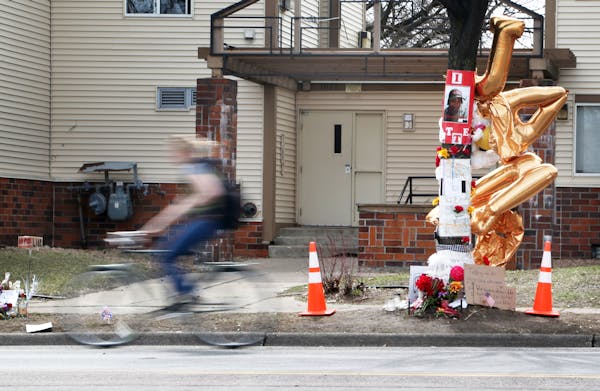Hennepin County Attorney Mike Freeman expressed unwavering confidence Thursday that he made the correct call in not prosecuting the two Minneapolis officers involved in the shooting death of Jamar Clark, pointing to the DNA evidence in the case as a "truth serum," but also questioned whether police could have avoided using deadly force during the altercation.
Reflecting on his decision, he said this case would not have been handled differently if a special prosecutor from outside Hennepin County had reviewed the same evidence. A very scary situation turned into the justified use of deadly force, he said.
The large, city-wide protests of Wednesday night faded to business-as-usual Thursday for North Side neighborhoods and its police precinct. Freeman himself had an afternoon doctor's appointment to check out a leg he injured last month during a fall on the ice.
Although he was satisfied by his choice to bypass a grand jury proceeding in Clark's case, he felt compelled to figure out how the 24-year-old's death during an altercation with officers Dustin Schwarze and Mark Ringgenberg could have been avoided. It was the first question he asked himself after reviewing videos and thousands of pages of evidence.
Freeman wondered why the officers did not have Tasers they possibly could have used instead of a firearm to de-escalate the conflict with Clark, who confronted medics taking away RayAnn Hayes in an ambulance after he allegedly assaulted her.
Roughly 60 percent of the department's patrol officers are equipped with one of the 300 devices available, according to police, which earlier this year cited cost ($1,500 per officer) as a factor in the limited number of devices available.
On Thursday, police spokesman Scott Seroka said that "generally, newer officers aren't issued Tasers as we have a limited number of them." Ringgenberg and Schwarze were each about 13 months into their tenure with the department at the time of their confrontation with Clark.
Seroka added that the department "is exploring the possibility of issuing all patrol officers Tasers."
When the officers approached Clark and he refused to let the paramedics drive Hayes away and resisted the officer's request to take his hands out of his coat pockets, Freeman wished they would have tased him.
"I can't believe all street cops don't have Tasers," he said.
A state legislator and onetime law enforcement officer, however, has discounted the reliability of Tasers when officers face potentially deadly situations.
State Rep. Tony Cornish, R-Vernon Center, Minn., a former police officer, said Thursday that critics of officers using deadly force should not look to Tasers as some kind of fix-all.
"You're damned if you use them, and damned if you don't," Cornish said. Not only do their use sometimes end in suspects dying or being injured, "a lot of the time, they are ineffective," he said.
Cornish added they should be used only to subdue an unruly person and not in self-defense, such as when a suspect has his or her hands concealed.
In July, a man causing a disturbance at an Arby's in Plymouth was struck with a Taser and then fatally shot during an altercation with police after he grabbed for an officer's gun.
Officer Amy Therkelsen first tried to subdue 31-year-old Derek R. Wolfsteller with a Taser, but he was not sufficiently affected. According to the state Bureau of Criminal Apprehension, Therkelsen then attempted to subdue Wolfsteller physically. A fight ensued, and he tried to remove her weapon from its holster, the BCA added. She gained control of her gun and shot him in the head.
The BCA's investigation was forwarded to Freeman's office, and a determination regarding the officer's actions will be made in the next month, Freeman said. A detailed report on his decision will be made public, but he said it's unclear if his office would release all the evidence as he did in the Clark case.
david.chanen@startribune.com • 612-673-4465
paul.walsh@startribune.com • 612-673-4482

Minnesota State Patrol celebrates diverse new class of troopers

Fired Mpls. teacher accuses management of 'cancerous rot'

Jill Biden rallies women, teachers for the Biden-Harris ticket in Bloomington speeches
Neighbors, city officials at odds over Rochester lake dam

